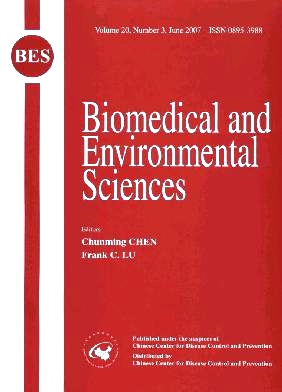Transfer of Paralytic Shellfish Toxins via Marine Food Chains:A Simulated Experiment
-
Key words:
- Paralytic shellfish poisoning toxins /
- A.tamarense /
- L.japonicus /
- N.awatschensis /
- A.salina /
- Marine food chains
Abstract: Objective To study the transfer of paralytic shellfish toxins(PST)using four simulated marine food chains:d8noflagellate Alexandrium tamarense→Artemia Anemia salina→Mysid shrimp Neomysis awatschensis;A.tamarense→N.awatschensis:A.tamarense→A.salina→Perch Lateolabrax japonicus;and A.tamarenae→L. japonicus. Methods The ingestion of A.tamarenge.a producer of PST, by L. japonicus,N.awatschensis,and A.salina was first confirmed by microscopic observation of A.tamarense cells in the intestine samples of the three different organisms,and by the analysis of Chl.a levels in the samples.Toxin accumulation in L.japonicus and N.awatschensis directly from the feeding on A.tamarense 8r indirectly through the vector of A.salina was then studied.The toxicity of samples was measured using the AOAC mouse bioassay method,and the toxin content and profile of A.tamarense were analyzed by the HPLC method.Results Both A.salina and N.nwatschensis could ingest A.tamarense cells.However,the ingestion capability of A.salina exceeded that of N.L. japonicus.N.awatschensis and A.salina by microscopic observation.Therefore,the three organisms could ingest A.tamarense cells directly.A.salina could accumulate high content of PST,and the toxicity of A.salina in samples collected on of tested mice within 7 minutes,and the toxin content in artemia sample collected on the lst day was estimated to be 1.65×10-5 μg STX equal/individual.Toxin accumulation in L.japonicus and N.awatschensis directly from the feeding on A.tamarense or indirectly from the vector of A.salina was also studied.The mice injected with extracts from L.japonicus and N. awatschensis samples that accumulated PST either directly or indirectly showed PST intoxication symptoms,indicating that low levels of PST existed in these samples Conclusion Paralytic shellfish toxins can be transferred to L.japonicus,N.awatschensis,and A.salina from A.tamarense directly or indirectly via the food chains.
| Citation: | ZHI-JUN TAN, TIAN YAN, PEN-CHENG YU, MING-JIANG ZHOU. Transfer of Paralytic Shellfish Toxins via Marine Food Chains:A Simulated Experiment[J]. Biomedical and Environmental Sciences, 2007, 20(3): 235-241. |







 Quick Links
Quick Links
 DownLoad:
DownLoad: